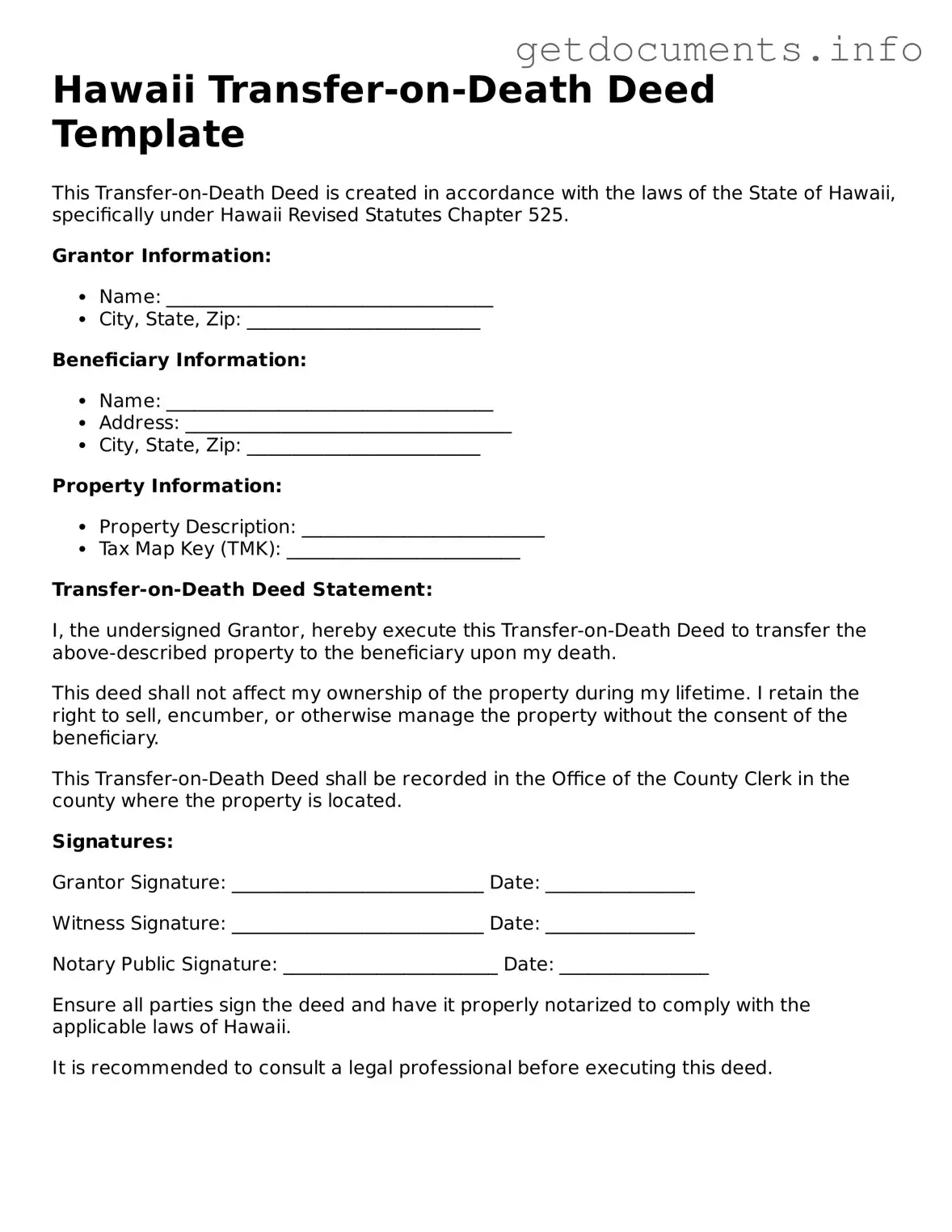Free Transfer-on-Death Deed Template for Hawaii
The Hawaii Transfer-on-Death Deed form allows property owners to transfer their real estate to designated beneficiaries upon their death, avoiding the lengthy probate process. This straightforward legal tool can provide peace of mind, ensuring that your property goes directly to your loved ones without unnecessary complications. If you're ready to simplify your estate planning, fill out the form by clicking the button below.
Access Transfer-on-Death Deed Editor
